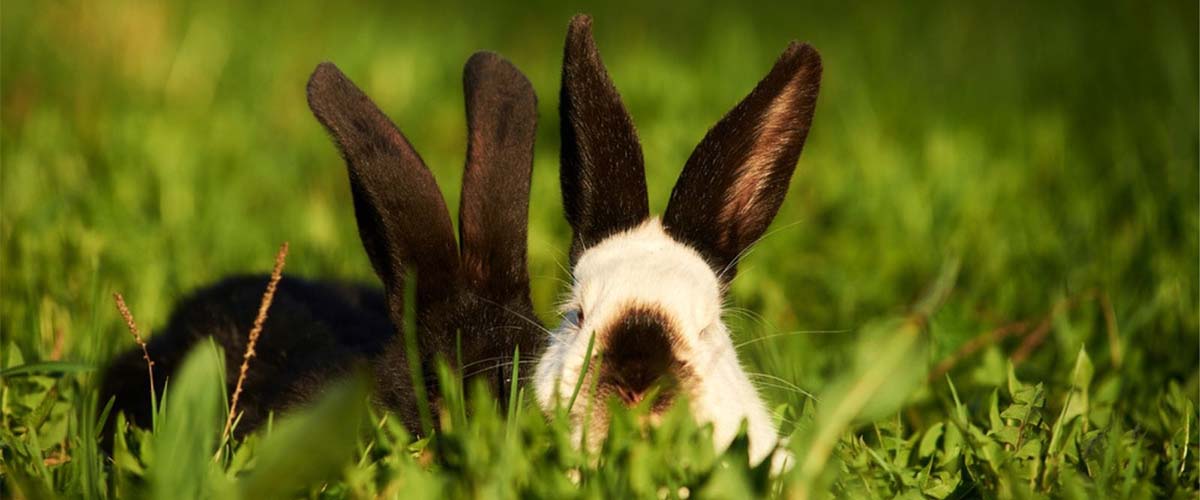Fleas, mites and lice in rabbits
Overview
- Skin parasites such as mites, lice and fleas can all cause itchy, uncomfortable skin in rabbits.
- In most cases, treatment is simple, but left untreated, a parasite infestation can lead to serious skin problems.
- The first symptoms of a parasite problem tend to include itchy skin, dandruff and alopecia (fur loss).
- Contact your vet if you notice anything wrong with your rabbit's skin or fur.
General information
Mites, lice and fleas are all tiny parasites that cause symptoms such as itching, rashes, alopecia (fur loss), dandruff, scabs and crusts.
In most cases, skin parasites are simple to treat, but left too long, they can cause serious skin problems.
When to contact your vet
Your rabbit’s fur should be smooth, thick and silky, if it’s not, or you notice symptoms of a skin problem, contact your vet for advice. Skin problems often cause a lot of discomfort so it’s always best to have your rabbit seen ASAP.
Ear mites
Ear mites are a common problem in pet rabbits. They cause painful, crusty ears and are extremely irritating/itchy. If your rabbit has symptoms of ear mites, have them checked by your vet ASAP. Most cases can be successfully treated with an anti-parasitic treatment, but left too long, ear mites can cause ear infections and other serious problems that are much more difficult to treat.
Ear mites spread easily from rabbit to rabbit, and can survive on surfaces for up to 3 weeks. For this reason, you will need to treat all your rabbits and their living space at the same time.
Fur mites
Walking dandruff (cheyletiella mite) is a mite that causes crusty, scaly skin and sometimes alopecia (fur loss). They are called ‘walking dandruff’ because when you look closely, they can be seen crawling on the skin and fur.
To treat cheyletiella, your vet will prescribe an anti-parasite treatment for your rabbits and their living space. Your rabbit may need more than one treatment to cure the problem completely. Cheyletiella mites can also pass to humans - speak to your doctor if you think you have caught mites from your rabbit.
Fleas
The most common way for a pet rabbit to catch fleas is via a cat or dog. Therefore, as long as you keep all cats and dogs in your household ‘flea-free’, your rabbit is very unlikely to suffer with a problem. It’s not usually necessary to routinely de-flea pet rabbits to prevent fleas.
It is also possible for pet rabbits to pick fleas up from a wild rabbits, which is more of a concern because they can transmit diseases such as myxomatosis. The best way to prevent your rabbit catching fleas from wild rabbits is to keep them completely separate.
If your rabbits catch fleas, your vet will prescribe a flea treatment for them, their living space/your home, and all other pets in your household.
WARNING: Dog and cat flea treatments can be poisonous for rabbits - only ever use treatments prescribed for your rabbit.
Prevention
Give your rabbit the best chance of staying parasite free by following the advice below.
- Keep your rabbit’s home clean by cleaning their bedding daily.
- Check their skin every day.
- Check your rabbit is grooming themselves and brush anywhere they can’t reach.
- Regularly de-flea all your other pets.
- Contact your vet as soon as you notice any skin problems developing.
Published: August 2020
Did you find this page useful?
Tell us more
Please note, our vets and nurses are unable to respond to questions via this form. If you are concerned about your pet’s health, please contact your vet directly.
Thank you for your feedback
Want to hear more about PDSA and get pet care tips from our vet experts?
Sign up to our e-newsletter
Written by vets and vet nurses. This advice is for UK pets only. Illustrations by Samantha Elmhurst.

